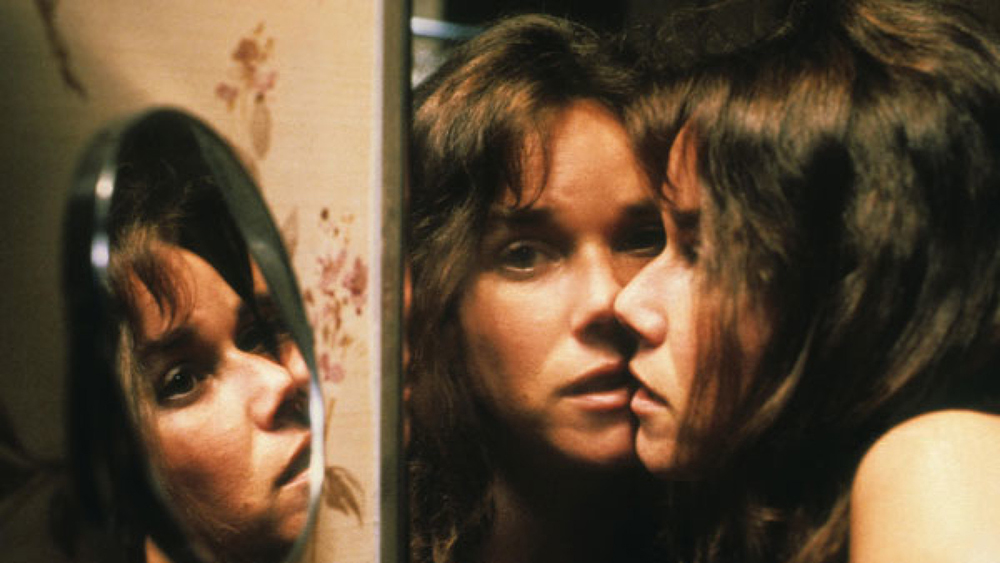Film
IN THE HARROWING MONTHS since the Harvey Weinstein scandal and the first wave of the #MeToo movement, I have found my thoughts returning again and again to The Entity, a long-forgotten supernatural horror film from the 1980s. Put simply, The Entity is about a woman living in Los Angeles who is repeatedly attacked and raped by a powerful but invisible force. When I describe the plot to people who haven’t seen the film, they usually respond by saying it sounds horrible—why would they want to watch something like that? Since a quick summary makes The Entity sound like some tasteless sexploitation picture, I understand the reaction, but I encourage people to watch it anyway, because beneath that dated and campy surface, The Entity is a film about sexual violence and the ways in which society silences the women who experience it while keeping the men who perpetuate it hidden from view. It’s about visibility—making what was previously unseen seen. And perhaps most importantly, The Entity is about a woman who believes in the power of her story and refuses to stop telling it.
In the film, Barbara Hershey plays Carla Moran, a hardworking single mother of three who is considered strong, intelligent, and stable by almost everyone in her life—not the type of woman who would fabricate silly stories about ghosts and rape. The film’s first scene follows Carla as she leaves her lackluster L.A. office job and rushes to night school, where she is studying to become a typist. After returning home late and tidying up the dirty kitchen, she sits down at her vanity and begins to rub lotion into her tired legs until she is suddenly punched in the face and dragged to her bed, where she is smothered with a pillow and brutally raped. When the attack is over, she sits up to find her assailant has vanished, as if out of thin air. She screams and her three children rush into her room, screaming along with her. Her oldest son searches the house, but finds nothing. Carla convinces herself it was just a very bad dream and goes to sleep.
This conciliation works—until the attack happens again. For the remainder of the film, the invisible entity mercilessly terrorizes Carla. It rapes her in bed, in her bathroom, in front of her children, and while she is awaiting a lover. She can’t see it, but she knows in her bones that it’s there. It smells. It’s big. It’s strong. And when it forces its way inside of her, it hurts. Though Carla trusts the reality of what is happening to her body, she is also painfully aware of what other people will think if she tells them. Who will believe her when she says the words, “I was raped by a ghost”? How does one even confess such a thing? Certainly people will just tell her that she’s crazy. That she is making things up. That it is all in her head.
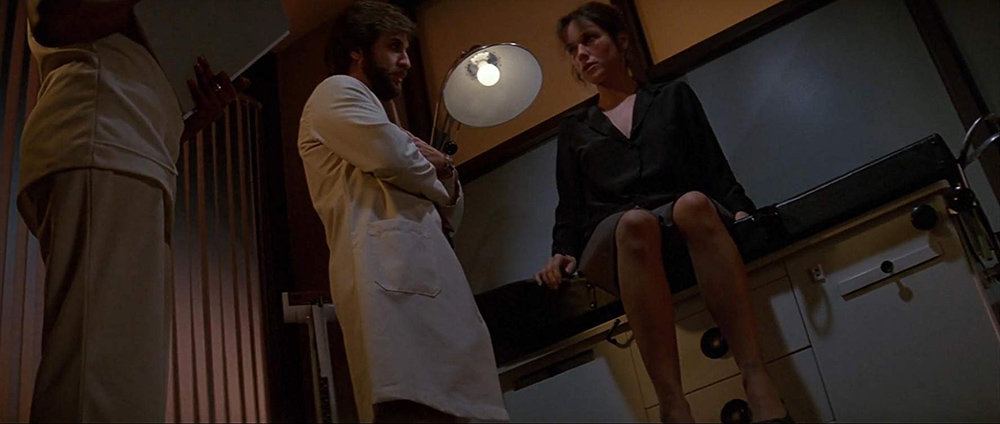
Eventually Carla confides in her friend Cindy, who suggests Carla see a psychologist. The only assistance Carla can afford is the free clinic at the nearby university, where she meets Dr. Schneider, a gruff but good-intentioned doctor with a Brooklyn accent, played by the poor man’s Al Pacino, Ron Silver. His response to Carla’s plight is rote. At first, he suggests she is likely suffering from a case of hysteria. When Carla later explains that her children have witnessed the phantom attacks, too, and that her son even broke his wrist trying to fight off the force, Dr. Schneider says it is likely a mass hallucination. Hallucinations, he explains, can be contagious. When she shows him the bruises and bite marks on her breasts, shoulders, thighs, and ankles, he says that especially powerful delusions can manifest physically. Underlying every word Dr. Schneider says is the implication that Carla has done this to herself. Like any good psychologist, he concludes that whatever Carla is experiencing has its roots in some deep-seated childhood trauma. With a little therapy and a lot of effort on Carla’s part, he is confident they can get to the bottom of her delusions and make them disappear.
When the attacks on Carla begin to increase in both frequency and intensity, Dr. Schneider takes her to a room full of university psychologists who listen to her story and ask a variety of probing questions in the hopes of getting to the roots of her apparent delusion. The mood is clinical and cold. To them, Carla is clearly little more than an intriguing subject—a potential topic for a future research paper. She answers their questions honestly, politely, and with a hint of exhausted desperation. When one doctor asks why this so-called invisible man chooses to rape her and her only, Carla responds meekly, “I suppose he finds me attractive.” Why do you think you’re so special that we should care about you? the doctor seems really to have asked.
After they’re done, the doctors ask Carla to leave the room. As soon as the door shuts behind her, they begin discussing the validity of her case as if she were a suspect rather than a patient. “She’s masturbating,” one of the doctors bluntly declares. “This entire circus. She’s invented it to cover up what every little girl does.” The other doctors offer their own outlandish explanations for Carla’s violent late night visitations: that the entity is a perverse manifestation of Carla’s sexual desire for her teenage son; that Carla has internalized the strict religious upbringing that taught her that sex was something evil and impure; that Carla is just a sex-crazed madwoman living out a “Dionysian fantasy” and “[falling] back into an infantile reality.” The causes differ, but the general consensus is essentially the same: Carla is only pretending. Despite the witnesses who saw the rape and the evidence of violence on Carla’s flesh, the things that she says are happening to her simply aren’t real. She is a victim of no one and nothing but herself.
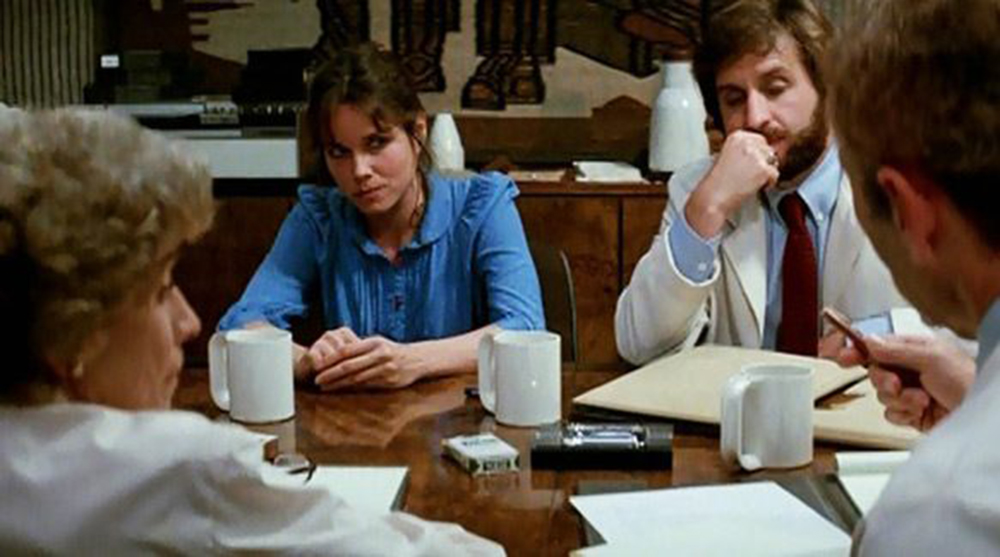
WHEN WOMEN (AND SOME MEN) first began using the #MeToo hashtag on Facebook and Twitter, I must admit I had my doubts. As someone wary of sharing anything remotely personal on social media, who considers it all too easy to post things from the comfort and safety of one’s couch and call it revolution, and whose first response to any sort of mass trend is self-important annoyance, I was skeptical. How can a hashtag be a movement? I wondered. How long will this latest “renewed conversation about sexual harassment and violence against women” last? I worried, perhaps cynically, that like everything on the Internet, #MeToo would make its brief impact and quickly vanish. It seemed too nebulous, too ethereal, too ghostly. I saw it, but could not reach out and touch it.
Historically speaking, I’d hardly say my doubts were misguided. Live in this world long enough as a woman and you learn to be skeptical of things like hope and change. Weren’t things supposed to “change” after Anita Hill testified against Clarence Thomas nearly thirty years ago? Or five years ago, when we first began discussing the omnipresence of sexual assault on college campuses? Haven’t we had this conversation many times before? Aren’t we always having it? And isn’t Donald Trump our president?
I re-watched The Entity two days after #MeToo began spreading across the internet, and I’ve watched it several times since. It is a troubling, yet enrapturing film. Despite its sensational subject matter, it doesn’t play out like a mediocre sexploitation picture, campy ghost flick, or smutty rape-revenge drama. With its fully fleshed characters, gripping plot, and tasteful (by early ’80s standards) special effects, I often wonder why The Entity is overshadowed by other contemporaneous ghost flicks, like Poltergeist or Ghostbusters. That being said, The Entity is also a profoundly problematic film. We repeatedly watch as a strong and beautiful woman is stripped, raped, thrown against walls, smothered, battered, and bruised. It is deeply disturbing, to say the least. But viewed through a particular lens, the film becomes a frightening dramatization of an all-too-common narrative: no one believes the woman crying rape. What Carla goes through in The Entity is what so many women fear and so many women experience: that they will be victims of sexual violence but will be dismissed, suppressed, or demonized if they decide to share their story. It is easier to defame a woman as hysterical, delusional, or manipulative than it is to accept that the horrible things she is saying are real. Women aren’t to be trusted or believed, this narrative tells us, especially when they are accusing a powerful man of something unseemly. The Entity is a testament to our society’s dismal handling of rape and sexual harassment, but it also confirms something equally disturbing about our society, though altogether more difficult to define: that sexual violence is so omnipresent, so normalized and unquestioned, so braided into the very fabric of our everyday lives, that when it happens, we barely even see it.
“The reality is that it will take more than just accusations and public shaming and the toppling of powerful men to make a substantive change.”
The evidence of this is everywhere. Rape kits pile up in police stations, evidence of violation plucked straight from women’s bodies, while the men responsible roam free with a sense of security many women feel they may never have. We are comfortable talking about “violence against women” but much less so attaching a subject to that action. We all know it happens to women—on college campuses, in homes, at places of employment, after dates, and among lovers, strangers, and friends—but we’ve conveniently erased the men who commit these crimes from the equation. They are as invisible as the entity that terrorizes Carla night after night. We know they are there, but we don’t exactly know who they are. When the subject is left blank, there is no one to accuse, to prosecute, or, perhaps most crucially, to educate. And so men keep committing these crimes again and again and again.
#MeToo and the onslaught of sexual assault allegations that followed have given faces to the perpetrators and forced us to grapple, once again, with the immensity of the problem—not only with how many people have been affected by it, but with how many people are responsible for keeping these systems of violence and inequality afloat. Almost every woman I know on Facebook used the #MeToo hashtag. This, of course, should come as no surprise. It is safe to assume that every woman has experienced sexual harassment of some form, more than once. What made #MeToo truly shocking was the other unpleasant reality it laid bare, one I think we’d all rather ignore: if nearly every women I know has experienced some form of intentional or unintentional harassment by a man, doesn’t that mean that almost every man I know has, intentionally or unintentionally, out of a place of ignorance and misunderstanding or from a place of hatred and violence, committed an act of harassment?
This isn’t to say that every man is a sexual criminal or deserves to be publicly called out. Far from it. Rather, it is to say that the problem we face is so large and all consuming, so insidious and complex and deeply engrained in the very fabric of our lives, that unwinding it will never be simple or easy. We may seek a quick fix—an exposé, a firing, a legal defense fund, a march—but the answer will likely continue to elude our grasp. Like Carla’s ghost, it is simply too hard to pin down. The reality is that it will take more than just accusations and public shaming and the toppling of powerful men to make a substantive change. Seeing the problem is just the beginning of the fight.
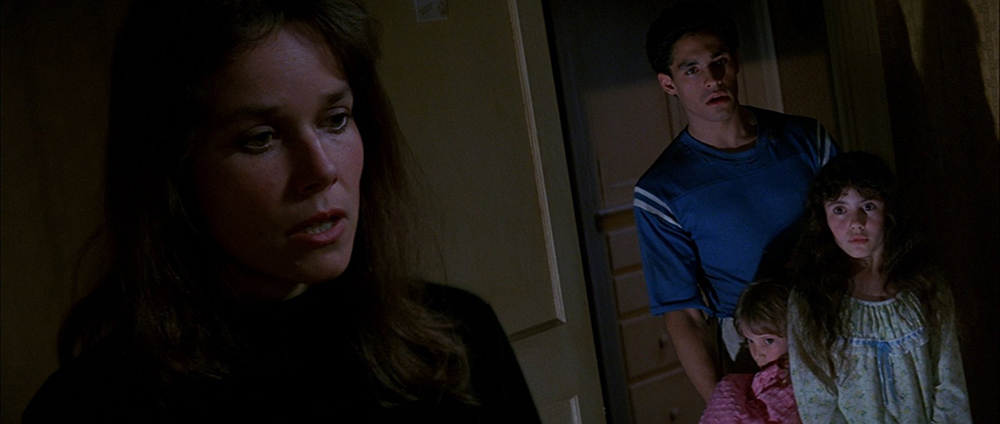
THERE IS A SCENE about halfway through The Entity in which Carla, after countless anxious days and haunted nights, finally falls asleep and begins to dream. The dream, we are led to assume, is a sexual one. After weeks of sexual terror, it seems Carla has finally caught a few moments of subconscious pleasure. Sensing the opportunity, the entity arrives and rapes her in the middle of the dream. This time, Carla doesn’t scream or try to fight it off. Instead, she has an orgasm. When Carla wakes up and realizes what has happened, she bursts into tears.
“I’m ashamed,” she admits to Dr. Schneider the next morning, knowing all too well what he will make of this latest encounter. Despite such a clear violation, Carla considers herself complicit, as if the fact that she was unconscious is no excuse, as if a person can’t be coerced and deceived into doing something they know, or quickly realize, they hate—as if you can’t want something and realize later that you were wrong. Dr. Schneider suggests Carla admit herself to a psychiatric facility so the entity won’t harm her or her children again. She refuses, insisting the entity won’t hurt her any longer, because she is going to “cooperate with him.” Like so many women, Carla feels she will be safer if she just goes along.
Doesn’t this scene echo the story of so many women who report self-loathing and blame after sexual assault, including the women who shared their experiences with Harvey Weinstein? In Ronan Farrow’s New Yorker article, many women confessed to the sense of of guilt and shame they felt after their encounters with Weinstein. Like Carla, these women were forced to make a calculation: Do I ward off sexual assault, or keep my reputation and career in tact? What version of “safety” matters more? Sometimes giving in, “cooperating,” can seem safer than fighting. Weinstein is a big man, after all, and he held the fate of their careers in his grubby palms. Many young women, vulnerable and ambitious, felt that sexual assault was the price they had to pay for the security of their dream. As actress Lucia Evans told Farrow, “That’s the most horrible part of it, and that’s why he’s been able to do this for so long to so many women: people give up, and then they feel like it’s their fault.”
“How do we have a sustained and intellectually rigorous dialogue about something so personal, so painful, and so slippery?”
In the days after #MeToo overtook the internet, the critics arose. There were, of course, the same old agitators who said the same old stuff they’ve been saying to assail the credibility and dignity of women for decades. Many warned of a “witch hunt,” arguing that the women speaking out were just a bunch of uptight, spiteful misandrists eager to brand men with scarlet R’s for things as simple as giving a woman a compliment or leaning in for an end-of-date kiss. But there were critics within the “movement,” as well. Some said it placed the burden of change once again on women, forcing the victims rather than the perpetrators to do the work of taking accountability. Others suggested men should come out and admit the times they have failed to act appropriately, engaged in sexual harassment, or committed an act of sexual violence.
As time went on, voices warned against “overdoing it,” of hitting people over the head with the conversation until they get “sick of it,” as if women’s rights were a re-run of a bad television show. The more women that share their stories across the spectrum, the thornier the issue becomes. Where do we draw the line between the traumatic and the merely unpleasant? Is being “insensitive” or “improper” the same thing as being a sexual predator? How can we urge more accountability and self-awareness on the part of men and women without tumbling back down the same rabbit hole of victim blaming and girl hating that we’ve been trapped in for so long? How do we have a sustained and intellectually rigorous dialogue about something so personal, so painful, and so slippery?
The conversations around sexual harassment and sexual violence will always be complicated and divisive, because sex is complicated and divisive. Human sexuality is a strange and murky thing, ever-shifting and ever-changing and different for every person. There are too many subterranean emotions, desires, and power dynamics at play to ever reach a solid conclusion about what exactly human sexuality is, or what exactly the solution to its problems may be. I’m not saying that the problem will never be “solved.” What I’m saying is that the solution might not look the way we thought it would.
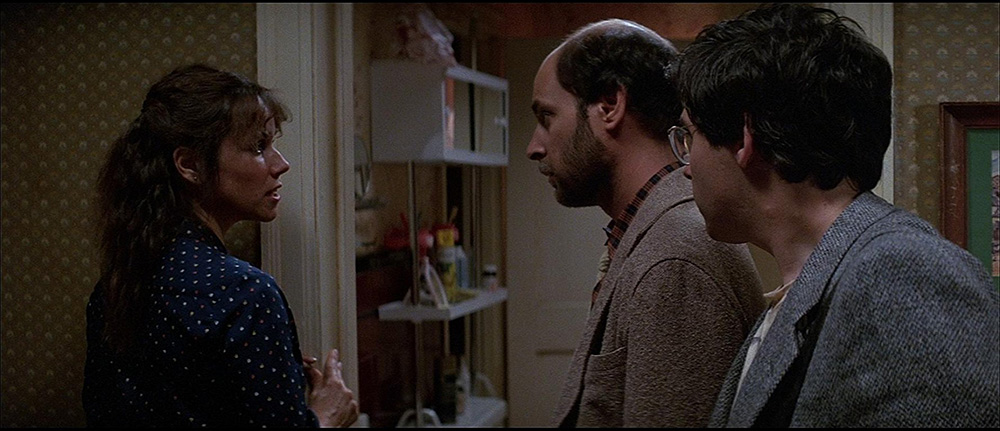
THE ENTITY IS SIMILAR to The Exorcist in that it is a horror film about a female body forcibly invaded by an evil but unseen masculine force. It is also similar in that in both films the characters first consult science and psychology for explanations before resorting to the occult: parapsychology in The Entity, Catholicism in The Exorcist. Only then do they find they answers and support they desperately need.
During a chance encounter in a bookstore, Carla teams up with a group of rag-tag university parapsychologists who not only believe her, but promise to help. Eager to have a new and exciting case, they lug their clunky cameras and goofy equipment and hippie grad students to Carla’s home and begin running a serious of tests. Eventually they even build a replica of Carla’s house in the university gym in the hope of freezing the entity with liquid nitrogen, a method only a team of 1980s university parapsychologists could come up with. Though the attacks continue during the initial tests, Carla’s spirits lift. She has at last found people on her side. Rather than judging or doubting or categorizing her, they listen. What’s more, they come up with a battle plan to make the invisible force go away once and for all. Carla finally feels confident in her own power and her own voice. The method might be unconventional, but it gives her hope. She believes she can take on the entity. She knows that it will fall.
Carla finds empowerment through parapsychology. Women after #MeToo found empowerment online. One definition of parapsychology is “the study of mental phenomena that are excluded from or inexplicable by orthodox scientific psychology.” Isn’t that, in a way, what the internet is, as well? Through a strange and abstract web of connections, we are able to explore the intimate thoughts, desires, and emotions that remain unseen in the spaces and institutions we accept as “reality.” Perhaps, despite its myriad pitfalls and problems, the internet is the only place where the powerful and fearful forces of sexual violence can meet their fierce counter-force. Perhaps the Digital Age is the era in which we will finally topple the timeworn structures that have perpetuated sexual violence and kept it faceless and hidden for so long.
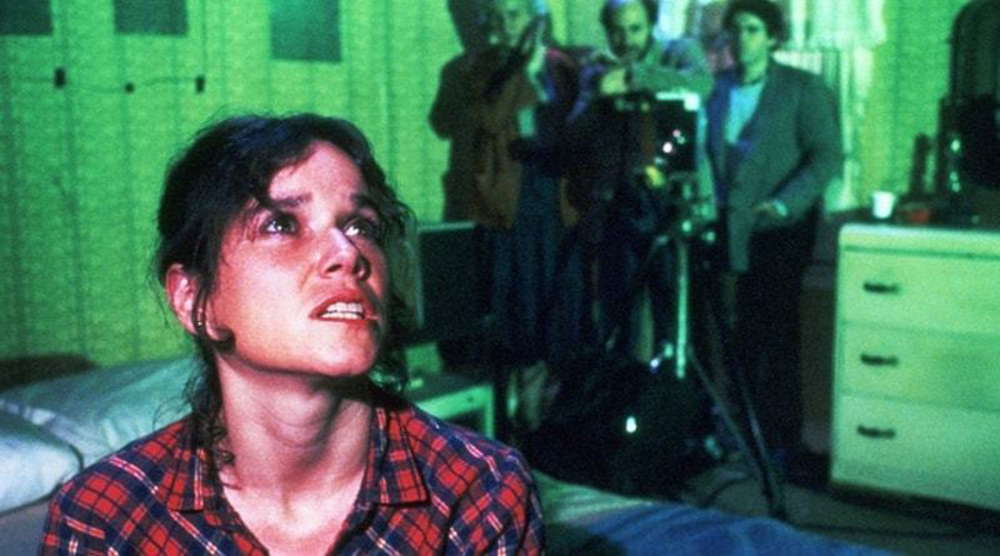
NEAR THE END of the film, the entity appears again, this time emitting a faint green light. Finally, Carla can actually see the ghost that has been abusing her for months. With a team of trusting parapsychologists behind her, Carla faces the entity and screams, “Come and show yourself, coward! Now that I’ve got my friends with me, let’s just see how brave you are!”
Like the entity and its flickering light, the predatory actions of many powerful men have become more visible and undeniable than ever before. But the truth is that simply naming names and firing the rich and powerful men won’t solve the problem. Not even close. We have to go beyond a call-out culture to something more transformative and revolutionary. The answer, I think, lies in dismantling the corrupt and unequal structures that have stood for too long; in realizing the ways in which each and every one of us is implicated in a violent and sexist culture; in more intelligently and empathetically teaching our boys and girls how to treat each other and themselves; in listening to women, all women, not just the beautiful, glamorous, white, celebrity ones; in holding people accountable for their actions and accepting that human relations are messy, complex, and ever-changing; in trying to create a world where respect, understanding, and love are valued more than money, power, and control; and most importantly, in acknowledging the immense strength of women and joining them in their commitment to improving things for the women of the future.
“He’s weak!” Carla cries as the entity slowly begins to fade. “He can’t touch us! You’re weak! You’re weak!”
Every time I watch The Entity, this scene sends a jolt through my body. Carla’s defiance in the face of such a gargantuan and inexplicable threat is inspiring. She is no longer daunted by the viciousness and elusiveness of her enemy, no longer willing to live with it lurking ominously in the shadows of her life. She is ready to fight, no matter how long and difficult that fight may be.
In the months since #MeToo, I find myself wanting to scream the same things that Carla screams at her invisible entity. Despite the fact that an unabashed misogynist is currently occupying our nation’s highest office, I think there is reason to feel hope. I know the fight will be long, hard, and complicated, but there is no denying that the forces that have maintained sexual violence and inequality for so long are growing weaker. Perhaps even more markedly, the forces fighting against them are growing stronger. To use Carla’s words, our friends are with us. We have a whole universe of men and women on our side. And through this, we acknowledge our power. The stronger and more fearless we become, the weaker they become. Sexual harassment and violence will no longer be an unspoken source of uncertainty and shame for women, and the powerful people who engage in it will no longer rest comfortably in the belief that they can’t be touched. Reality is now the other way around. Just like Carla says: They can’t touch us.
Marlena Williams is a writer and filmmaker living in Portland, Oregon.
